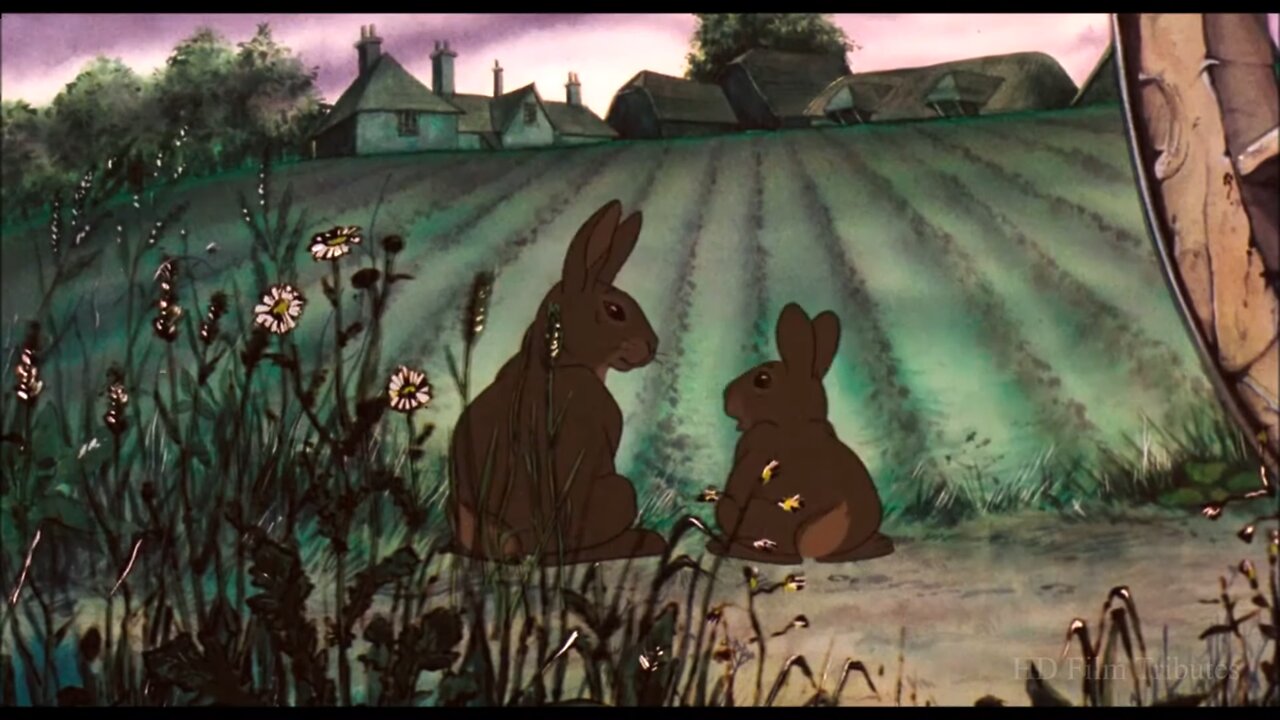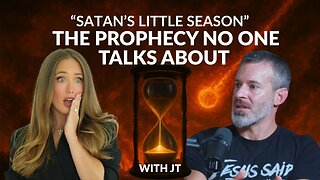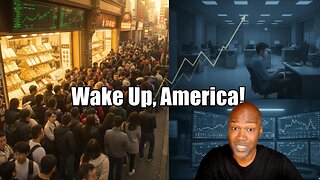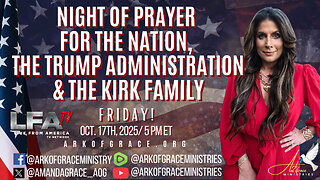Premium Only Content

Watership Down • Bright Eyes • Art Garfunkel
"Bright Eyes" by Art Garfunkel • Watership Down
"Bright Eyes" is a poignant, folk-pop ballad performed by Art Garfunkel, written by Mike Batt for the 1978 animated film Watership Down, based on Richard Adams' 1972 novel of the same name. Featured on the film's soundtrack, the song serves as an emotional centerpiece, capturing themes of mortality, hope, and spiritual transcendence. Composed with a gentle acoustic arrangement and Garfunkel’s ethereal vocals, "Bright Eyes" became a UK chart-topping hit, reaching #1 in 1979, and remains one of the most iconic songs tied to animated cinema.
In Watership Down, the song underscores the story of a group of rabbits facing survival challenges in a harsh, human-encroached world. The lyrics reflect the perspective of a rabbit confronting death, inspired by the novel’s mystical elements, particularly the rabbit folklore surrounding the Black Rabbit of Inlé, a death-like figure. Key lines like "Is it a kind of dream / Floating out on the tide / Following the river of death downstream?" evoke a journey toward the afterlife, while the chorus—"Bright eyes, burning like fire / Bright eyes, how can you close and fail?"—conveys a struggle to hold onto life and light in the face of inevitable loss. The song’s melancholic tone and imagery resonate with the novel’s exploration of existential questions, balanced by hope in communal survival and spiritual renewal.
Musically, "Bright Eyes" features a delicate interplay of acoustic guitar, strings, and Garfunkel’s tender, soaring voice, creating a haunting yet comforting atmosphere. Mike Batt’s composition draws on folk traditions, while Garfunkel’s delivery, honed through his Simon & Garfunkel work, imbues the song with emotional depth. Its production emphasizes simplicity, allowing the lyrics’ introspective weight to shine.
Cultural and Literary Significance
Watership Down uses rabbits to explore human themes—survival, leadership, and the clash between nature and modernity. "Bright Eyes" amplifies the story’s spiritual undertones, particularly the rabbits’ mythology, where the sun god Frith and the Black Rabbit of Inlé represent life and death. The song’s focus on mortality echoes literary traditions of anthropomorphic allegory, as seen in works like Animal Farm. https://www.britannica.com/topic/Watership-Down
The song’s universal appeal lies in its meditation on life’s fragility, resonating with listeners beyond the film’s context. Its popularity in the UK, where it topped charts for six weeks, reflects its emotional impact, often associated with loss and remembrance.
https://www.officialcharts.com/artist/13570/art-garfunkel/
In Christian interpretations, "Bright Eyes" has been linked to themes of resurrection and eternal life, with the “bright eyes” symbolizing the soul’s enduring light, akin to biblical imagery in John 8:12 (“I am the light of the world”). https://www.biblegateway.com/passage/?search=John+8%3A12&version=NIV
The song’s cultural legacy endures through covers, parodies, and its use in media, with fans on platforms like Reddit celebrating its emotional resonance in discussions of Watership Down’s darker themes. https://www.reddit.com/r/watershipdown/Yet, "Bright Eyes" also prompts reflection on humanity’s environmental impact, as the rabbits’ plight mirrors nature’s struggle against industrialization, a theme Adams emphasized in interviews.
https://www.theguardian.com/books/2014/dec/23/richard-adams-watership-down-interview
Ultimately, "Bright Eyes" is a timeless meditation on life, death, and hope, blending folk simplicity with profound existential questions, cementing its place as a cultural touchstone tied to Watership Down’s enduring legacy.
Lyrics Source: https://www.musixmatch.com/lyrics/Art-Garfunkel/Bright-Eyes
-
 8:22
8:22
NatalieGWinters
4 days agoTulsi Gabbard's Bombshell Report on Obama’s Intel Manipulation - Unveiling 2016 Election Conspiracy
1053 -
 LIVE
LIVE
Nerdrotic
3 hours ago $6.26 earnedRacist Academics Attack Tolkien | Hollywood to Strike AGAIN? | AI Doomsday - Friday Night Tights 376
2,899 watching -
 LIVE
LIVE
Dr Disrespect
10 hours ago🔴LIVE - DR DISRESPECT - ARC RAIDERS - THE ULTRA EXTRACTION GAME
835 watching -
 27:49
27:49
Robbi On The Record
20 hours ago $4.16 earnedRevelation, the End Times, and Satan’s Little Season part II - ft JT
12.9K5 -
 54:37
54:37
HotZone
4 days ago $0.95 earnedTen Hostages Missing! Will Hamas Keep Its Word?
17.2K3 -
 8:05
8:05
Rethinking the Dollar
7 hours agoFiat’s Endgame? Gold & Silver Lines Don't Lie
4.18K5 -
 LIVE
LIVE
LFA TV
22 hours agoLIVE & BREAKING NEWS! | FRIDAY 10/17/25
1,059 watching -
 1:13:16
1:13:16
vivafrei
4 hours agoJohn Bolton is a DUMB CRIMINAL (Allegedly) - Trans Madness in Loudoun Country! Tampon Tim AND MORE!
76.2K39 -
 2:45:30
2:45:30
Barry Cunningham
17 hours agoBREAKING NEWS! PRESIDENT TRUMP MEETS WITH UKRAINE PRESIDENT ZELENSKY!
61.1K22 -
![MAHA News [10.17] Fertility Crisis, Redoing Vax Schedule, Psychiatry Corruption, Vegan vs Carnivore](https://1a-1791.com/video/fwe2/78/s8/1/Q/v/s/r/Qvsrz.0kob-small-MAHA-News-10.17.jpg)
Badlands Media
15 hours agoMAHA News [10.17] Fertility Crisis, Redoing Vax Schedule, Psychiatry Corruption, Vegan vs Carnivore
22.3K3